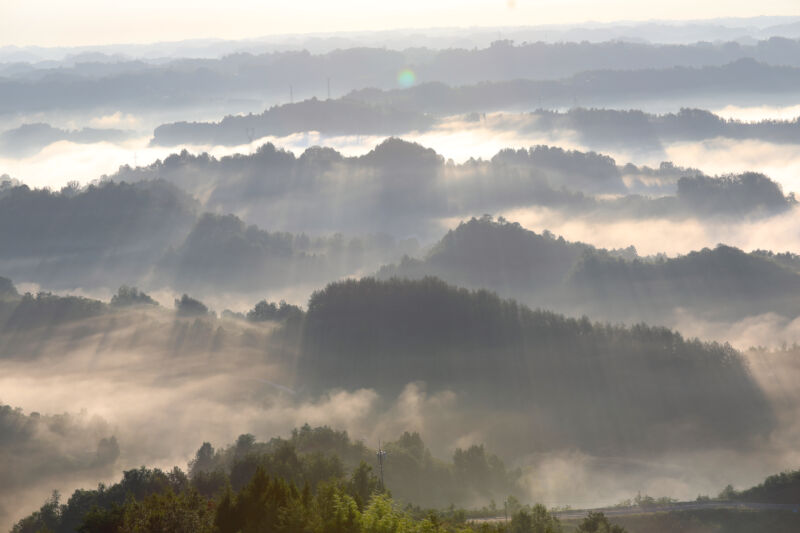A revelation about trees is messing with climate calculations

Enlarge / The early morning sun shines through the morning fog on the countryside in Chongqing, China, September 14, 2023. (credit: Costfoto/NurPhoto via Getty Images)
Every year between September and December, Lubna Dada makes clouds. Dada, an atmospheric scientist, convenes with dozens of her colleagues to run experiments in a 7,000-gallon stainless steel chamber at CERN in Switzerland. It's like science camp," says Dada, who studies how natural emissions react with ozone to create aerosols that affect the climate.
Clouds are the largest source of uncertainty in climate predictions. Depending on location, cloud cover can reflect sunlight away from land and ocean that would otherwise absorb its heat-a rare perk in the warming world. But clouds can also trap heat over Arctic and Antarctic ice. Scientists want to know more about what causes clouds to form, and if that effect is cooling or heating. And most of all, says Dada, We want to know how we humans have changed clouds."

In the sky, aerosol particles attract water vapor or ice. When the tiny wet globs get large enough, they become seeds for clouds. Half of Earth's cloud cover forms around stuff like sand, salt, soot, smoke, and dust. The other half nucleates around vapors released by living things or machines, like the sulfur dioxide that arises from burning fossil fuels.